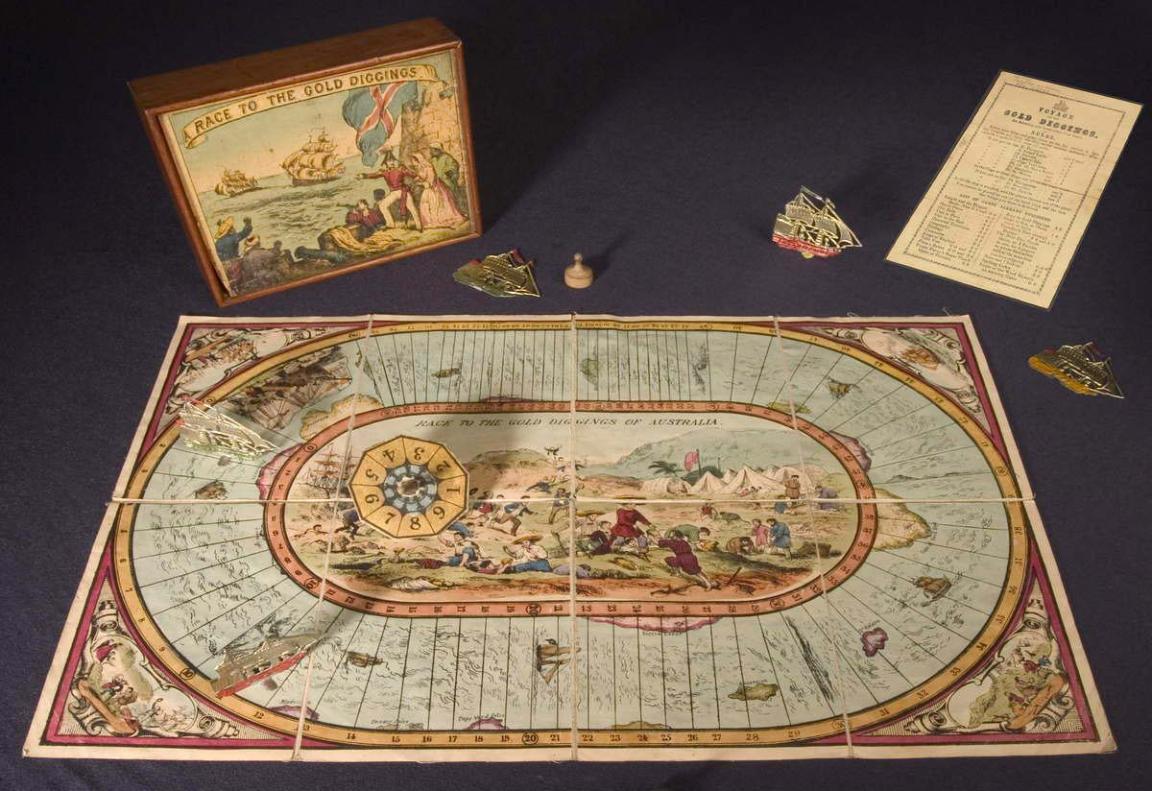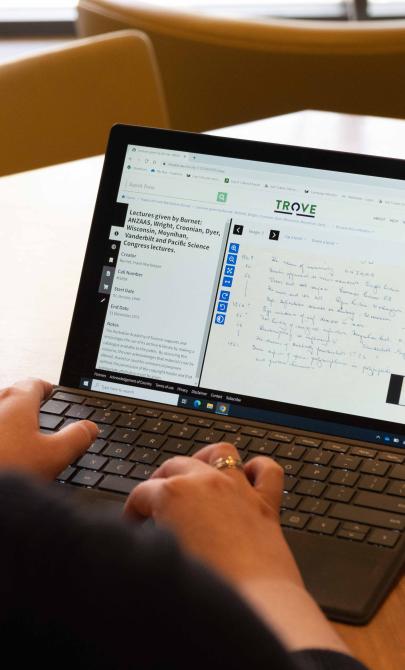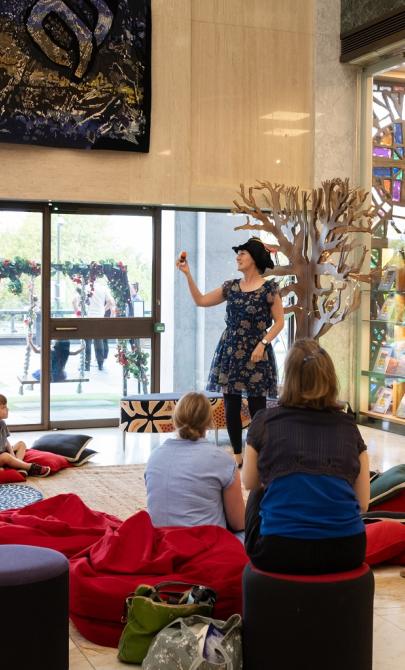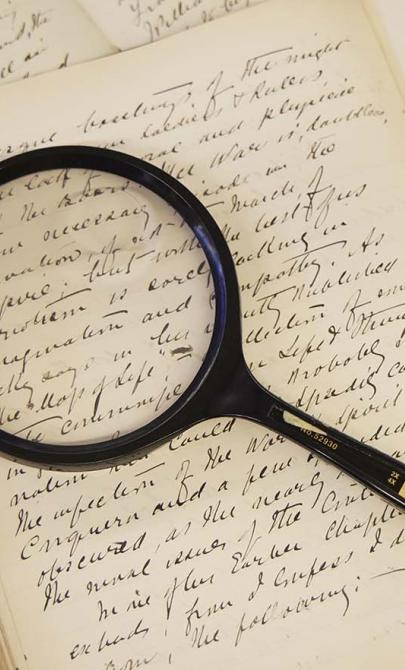The promise of gold
In the box
The game comes in a printed wooden box and includes:
- a brightly coloured game board (a linen-mounted, hand-coloured lithographic sheet)
- a printed sheet of rules
- 6 painted ships made of metal and wood (used as counters)
- 2 dice
- 3 wooden pegs
- a cardboard teetotum (spinning top)
A tool for migration
Produced during the height of the Australian gold rushes, the game was designed as a promotional tool to encourage skilled workers to migrate to the colony. It appealed to British families—especially the middle and lower classes—by presenting Australia as a land of opportunity.
How the game is played
The board features an oval track divided into 80 spaces, representing the sea voyage from Plymouth, England, to Port Phillip, Australia. In the centre is an image of gold miners at work. Each corner of the board shows a different aspect of the mining experience, including the ultimate reward: bags of gold.
Players race to complete the journey. The first to reach Port Phillip is rewarded with a trip to the goldfields, where they find gold nuggets “the size of footballs”. Despite its age, the game shares a familiar goal with many modern board games: to strike it rich, fast.
Selling the dream of Australia
For many British families, gold wasn’t the only attraction. Australia symbolised a fresh start, free from the class constraints of the Old World. Migrants hoped to find land, decent wages and social mobility. In this way, freedom—as much as gold—was the prize.
Much like today’s glossy travel brochures and promotional campaigns, Race to the Gold Diggings helped sell the dream of Australia to the wider world.

Board game titled: Race to the gold diggings of Australia] [realia], 1855, nla.gov.au/nla.obj-139615708
Board game titled: Race to the gold diggings of Australia] [realia], 1855, nla.gov.au/nla.obj-139615708
Learning activities
These activities help students explore themes of migration, gold rush history and cultural representation through historical artefacts and creative tasks.
Digital Classroom: Race to the Gold Diggings of Australia
Activity 1: Explore the board game and discuss motivations for migration
Show students a digital image of the Race to the Gold Diggings of Australia board game and the accompanying video.
Use these questions to guide a class discussion:
- What were the pull factors that influenced migration to Australia in the 1850s?
- What were the push factors?
- What would people need to consider when thinking about migrating to Australia in the 1850s?
- Why might someone choose to migrate to Australia today?
Activity 2: Mapping and historical context
- Ask students to locate the towns of Bathurst, Ballarat, Clunes and Warrandyte on a map.
- Have them measure the distance from each town to the nearest ocean.
- Prompt discussion on:
- What migrants in the 1850s may have brought with them.
- How they may have searched for gold or established themselves in other roles such as skilled workers or business owners.
Activity 3: Analysing the board game imagery
- As a class, examine the central image in the Race to the Gold Diggings board game.
- Discuss whether the depiction is realistic based on students’ knowledge of life on the goldfields.
- Encourage students to consider whether everyone’s experience matched the image shown.
Activity 4: Create a modern board game about migration to Australia
- Divide students into pairs or small groups.
- Ask them to create a board game that promotes Australia as a destination for immigrants today.
- Encourage inclusion of modern challenges, rewards and culturally diverse perspectives.
Activity 5: Redesign the board game packaging
- Ask students to redesign the packaging for Race to the Gold Diggings to reflect modern Australia during a ‘resources boom’.
- Students should update the imagery to include contemporary clothing, hairstyles and technology.
Suggested related resources:
You could extend this activity by connecting it to other Treasures Gallery materials on:



